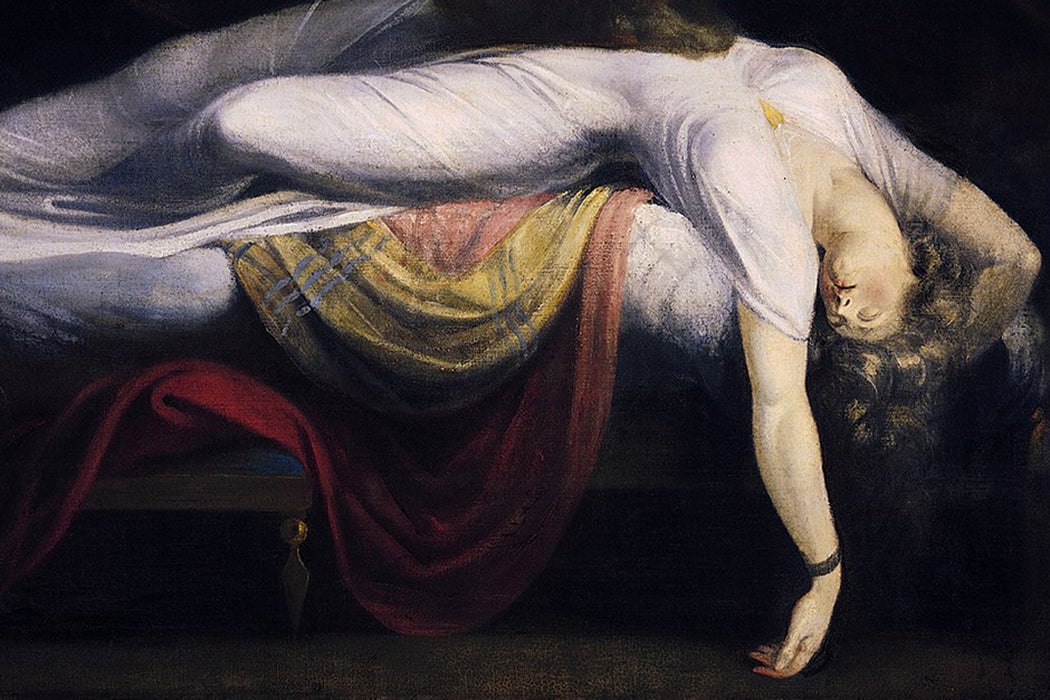In a recent interview with Slate, political scientist Mark Lilla remarked that Democrats have struck “a slightly hysterical tone about race.” Lilla’s breezy dismissal of America’s original sin is nothing new. What is new, however, is this use of the charged word “hysterical.” Whether Lilla knows it or not, hysteria and race have a long and unseemly shared history in American life.
Hysteria was a woman’s disease, a catchall malady for women who exhibited any of a multitude of symptoms, including paralysis, convulsions, and suffocation. Although diagnoses of hysteria date back to ancient Greece (hence its name, which derives from hystera, the Greek word for “womb”), it was in the nineteenth century that it emerged as a linchpin of modern psychiatry, gynecology, and obstetrics. According to Mark S. Micale, nineteenth-century physicians “considered hysteria the most common of the functional nervous disorders among females.” It was, wrote the prominent nineteenth-century neurologist Jean-Martin Charcot, the “great neurosis.”
But as feminist historian Laura Briggs demonstrates in “The Race of Hysteria: ‘Overcivilization’ and the ‘Savage’ Woman in Late Nineteenth-Century Obstetrics and Gynecology,” hysteria was also a racialized condition. More than just a woman’s disease, it was a white woman’s disease. American medical professionals in the 1800s who treated hysteria diagnosed the disorder almost exclusively among white, upper-class women—especially those who had sought higher education or had chosen to abstain from having children. From this data, they hypothesized that hysteria must be a “symptom of ‘overcivilization,’” a condition disproportionately affecting women whose torpid lives of luxury had made their nervous and reproductive systems go haywire, which, in turn, threatened whiteness itself. “The whiteness of hysteria,” writes Briggs, “signaled the specifically reproductive and sexual failing of white women; it was a language of ‘race suicide.’” Nonwhite women, on the other hand, because they were thought to be more fertile and more physically robust, were thus marked as “irreconcilably different” from their white counterparts, more animalistic and thus “fit for medical experimentation.”
It was in this way that hysteria emerged in the late nineteenth century as a tool of patriarchal power and white supremacy, a means of dampening the educational ambitions of white women and dehumanizing people of color, all under the elaborate drapery of scientific rigor and professional authority.
Weekly Digest
Although hysteria virtually disappeared from medical literature by 1930, it has had a long linguistic afterlife. It’s mostly used as a synonym for funny (i.e., “Last night’s episode of Veep was hysterical”), but it also retains some of its original nosological flavor when used in the sense of “uncontrollably emotional,” as Lilla did in his Slate interview.
Lilla likely didn’t intend to strike the pose of a nineteenth-century obstetrician when he said that “there’s been a kind of slightly hysterical tone about race” on the political left. Nevertheless, if words still mean things—and in this post-covfefe world, one hopes they do—then, wittingly or not, Lilla still resuscitated a pathological term of art with a long history of undercutting women’s aspirations toward autonomy and nonwhite people’s struggle for recognition and equal treatment under the law. Lilla’s choice of words was, at best, unfortunate. Attributing liberals’ social concern for the violence enacted upon marginalized groups to emotional imbalance minimizes a genuine sadness and an authentic anger. Even three decades after “hysteria” was deleted from the third edition of the Diagnostic and Statistical Manual of Mental Disorders (DSM-III), some of the word’s diagnostic power obviously still remains.







